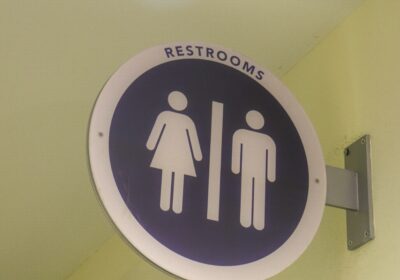Arms dealing is problem far beyond UN treaties
The United Nations General Assembly approved the most comprehensive global arms trade treaty on Tuesday after gaining a majority of the member states’ support. The treaty finalizes a nearly decade-long campaign to curb the distribution of weapons to countries that have been charged with human rights violations, terrorism and organized crime.
But the UN is attempting to solve a problem that its own leading members created.
After the psychological warfare of the Cold War ended and both the U.S. and the former Soviet Union were inundated with massive surpluses due to the arms race, both sides needed somewhere to liquidate their arsenals. The U.S. chose to sell to developing countries of Africa, Asia and the Middle East while the former Soviet Union chose Cuba, Vietnam, Syria as well as the Middle East as their beneficiaries.
In the 20 to 30 years after the end of the Cold War, Africa, East Asia and most of the Middle East were plagued with violent hostilities that still continue to this day. Millions of people were systematically killed by genocidal military powers in Africa. Middle Eastern nations were forced to rebel against their oppressive governments in what is now known as the Arab Spring. Terrorist groups like the Taliban, al-Qaida and the Mujahideen have carried out countless attacks against the world.
While the UN may have had an honorable intention toward the well-being of the human race, it is still disappointing that such a resolution took this long to come to an international agreement. It is disappointing that there is not unanimous consent among the world powers.
It is disappointing that now, nearly 20 years after the Rwandan genocide and a decade after the genocide in Darfur, there is finally a push to curb the arms trade.
But the proliferation of weapons throughout the world is not going to stop because the UN finally decided that it should regulate trade.
International arms trading is a
$85 billion a year industry, of which most of its plunder comes from the developed world selling the developing world weapons in return for the small amount of wealth that the developing country can muster.
According to a report from the Congressional Research Service on Arms transfers to the developing world, the U.S. provides 43.6 percent of the arms transactions to developing countries — Russia is the runner-up with 5.7 percent.
It is almost as if the world has decided that the connection between the end of the Cold War and the beneficiaries of the arsenals have no correlation with the current hostilities in those regions.
If any international body wants to do something about stopping gun-related atrocities, they should start by stopping their own leading powers from manufacturing and distributing extensive amounts of weaponry instead of making sure they have a reasonable tally of such transactions. International arms trading should not be an industry, not to mention one which is so profitable. The United Nations General Assembly approved the most comprehensive global arms trade treaty on Tuesday after gaining a majority of the member states’ support. The treaty finalizes a nearly decade-long campaign to curb the distribution of weapons to countries that have been charged with human rights violations, terrorism and organized crime.
But the UN is attempting to solve a problem that its own leading members created.
After the psychological warfare of the Cold War ended and both the U.S. and the former Soviet Union were inundated with massive surpluses due to the arms race, both sides needed somewhere to liquidate their arsenals. The U.S. chose to sell to developing countries of Africa, Asia and the Middle East while the former Soviet Union chose Cuba, Vietnam, Syria as well as the Middle East as their beneficiaries.
In the 20 to 30 years after the end of the Cold War, Africa, East Asia and most of the Middle East were plagued with violent hostilities that still continue to this day. Millions of people were systematically killed by genocidal military powers in Africa. Middle Eastern nations were forced to rebel against their oppressive governments in what is now known as the Arab Spring. Terrorist groups like the Taliban, al-Qaida and the Mujahideen have carried out countless attacks against the world.
While the UN may have had an honorable intention toward the well-being of the human race, it is still disappointing that such a resolution took this long to come to an international agreement. It is disappointing that there is not unanimous consent among the world powers.
It is disappointing that now, nearly 20 years after the Rwandan genocide and a decade after the genocide in Darfur, there is finally a push to curb the arms trade.
But the proliferation of weapons throughout the world is not going to stop because the UN finally decided that it should regulate trade.
International arms trading is a
$85 billion a year industry, of which most of its plunder comes from the developed world selling the developing world weapons in return for the small amount of wealth that the developing country can muster. 12








